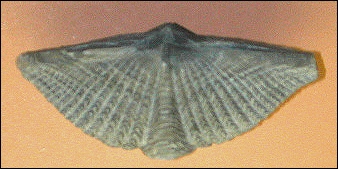

Sea shells on a mountain top in the desert? How can this be? Ask a geologist, and you will learn that many of our desert ranges have layers of limestone with seashells slowly weathering out of them. Much of what is now the high Chihuahuan Desert was once under the sea.
Fossil-bearing limestone started out as ocean floor inhabited by a wide variety of animals—clams, snails, lamp shells, corals, crinoids, and many more. As sediments built up, the remains of these creatures were buried, deeper and deeper, in fine material that pressure and chemical changes slowly turned into rock. Through millions of years, what once was sea floor rose to become dry land, eventually reaching an elevation thousands of feet above sea level. Toward the end of this process, stretching of the land caused huge blocks of rock to sink, while others tilted to form the desert ranges we see today. The next time you see a mountainside seashell, remember the actions of the restless earth that brought you that denizen of the deep.
See fossils from the limestone of the Franklin Mountains and Mount
Cristo Rey at the Centennial Museum.

Listen to the Audio (mp3 format) as recorded by KTEP, Public Radio for the Southwest.
Contributor: Arthur H. Harris, Laboratory for Environmental Biology, Centennial Museum, University of Texas at El Paso.
Desert Diary is a joint production of the Centennial Museum and KTEP National Public Radio at the University of Texas at El Paso.

A fossil Devonian seashell. Centennial Museum Collections.